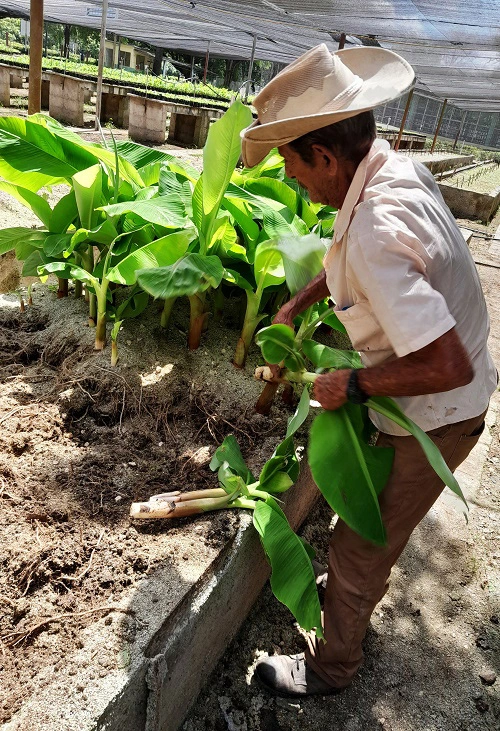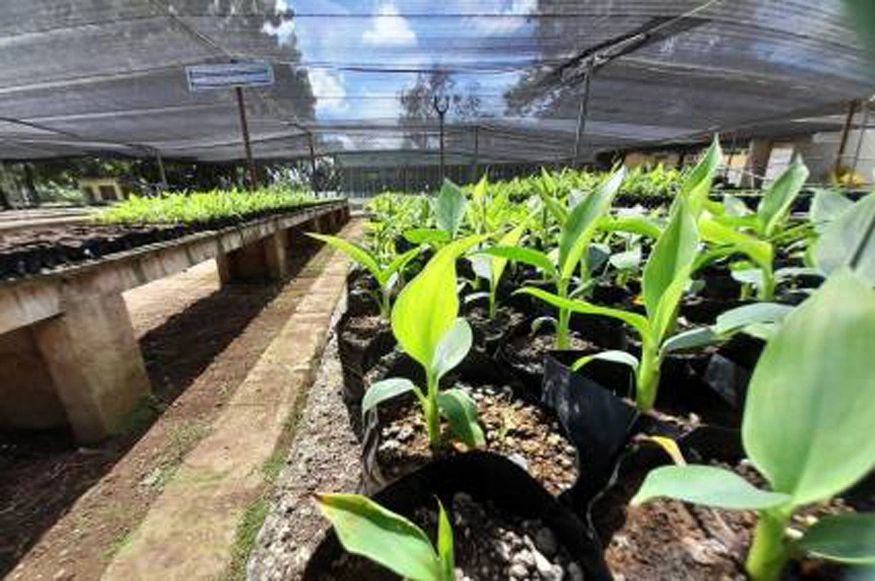Vermiculture, an effective method of agroecology, is used in the biofactory in the province of Holguin, where its benefits are incorporated into the substrate required for filling bags.
Eight nurseries were created for this purpose, a few months ago, in order to help in the rooting and vigor of plantations. Derived from this practice are humus, which is mixed with animal manure and topsoil, and exilate, collected and used in the treatment and spraying of plants.
biofactory, production, plants, Holguín

Agustín Almarales, a specialist at the center, reports that “we are now working mainly in the cultivation of bananas, which is our social objective and a necessary food in the country. Marketing is mostly done with production poles, in Beola (Rafael Freyre), Mayarí and Cueto, and also in Urbano Noris and Cacocum in the last few days. We are developing different clones of different varieties of plantains.
“In addition to the biotechnological work, we have also ventured into nurseries, using the traditional method. We buy seeds from the farmers, and we disinfect and plant them, in order to achieve plant sales after 15 days, in general. This method differs from the biotechnological one, because its cycle is shorter, although it is true that it is less productive. The banana is not cyclical, it can be planted at any stage, so it is characterized by its resistance”.
biofactory, production, plants, Holguín
In addition, they encourage malangs – the varieties xanthosoma and colocasia-, acquired by production units with water supply, given the humidity they require. This biofactory can generate, at least, one million 500 thousand vitroplants per year, after its reopening two years ago.
This entity, attached to the UEB (Unidad Empresarial de Base) Semillas Holguín, also commercializes, through the Provincial Delegation of Agriculture, papaya and yam plants, the latter using the traditional alternative, fractioning it, in such a way that from one quintal of the tuber, 2,500 to 3,000 seedlings are obtained. Also, in line with the diversification of its production, it delivers tomato and bell pepper seedlings.
The plant, which had been paralyzed for more than 10 years, after about three decades of exploitation and a high deterioration of its equipment, was rehabilitated in a capital way, investing 2,748,100 pesos and importing foreign technology.
With information by Nelson Rodríguez Roque – Juventud Rebelde / Translated by Radio Angulo
- Solar Energy Kits Sold to Subsidized Sectors in Holguin - 19 de December de 2025
- Art Center Hosts CODEMA’s 40th Anniversary Celebration - 19 de December de 2025
- Holguin and the Broken Window Syndrome - 19 de December de 2025

